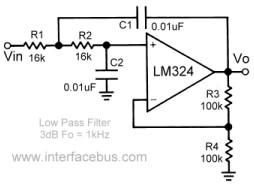I know, I know… It has been far too long since my last post.
The weather is cold and rainy so it’s CIRCUIT BENDING TIME!!!
I have been working on the Kawasaki Dual-CoolKeys lately. It’s a great keyboard with many independent features. By independent I mean, the keys are tied to a different timing resistor then the drums. Also, there is the ability to have one side play one set of instruments and the other side play another set. HOW COOL IS THAT?!?!?
I was digging through the usual circuit bending suspect’s blogs and was, as always, blown away by noystoise.com. The man is a super genius. And best of all, all his circuit bent gear looks so good.
He always has a filter (or two) in his projects. So, I wanted to have one too. How hard could it be? The answer is NOT HARD AT ALL!!!
I dug up some schematics for an LM324 Quad Op-Amp low-pass filter circuit and tried it out. I ran into one major problem with the integration of the low-pass filter and the Dual-CoolKeys. The Coolkeys has the drums output as the negative terminal going into it’s internal speaker. The keys are on the positive terminal. WHAT?!?!?
I spent a day just trying to figure out why the drum beats weren’t playing into the filter.
Once I figured out that each line into the speaker was actually individual sound outputs it made things easier. However, another issue is that if you connect the two outputs together with resistors to mix the sound, it shorts out the keyboard. I don’t know if it needs higher resistor values or what but that was annoying too.
Ultimately, I think I will just run each into an amplifier and mix them after that.
Back to the low-pass filter…
The filter is a simple build. Nothing fancy. The circuit only uses one op-amp from the LM324 so you still have 3 op-amps for other things. A great thing to add would be another filter for the drums. Or a high-pass filter… We will see.
I bread boarded everything up and it worked great.
I played around a little with the values of the potentiometer and the other resistors. It took a while to find the right balance. If I remember correctly, the original schematic worked pretty well though.

LM324 Low-Pass Filter
It’s a great little circuit and super easy to build. Try it out and let me know how it goes.
Happy bending!!!









